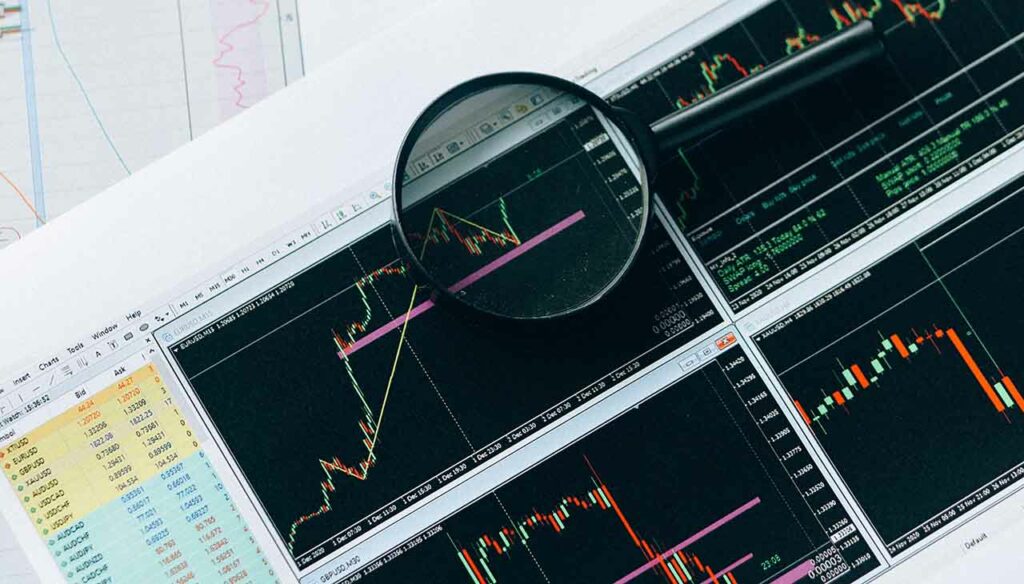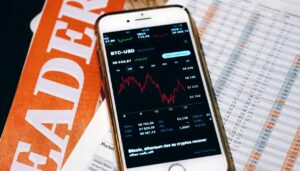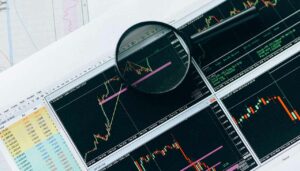Discover the Hidden Forex Secret: Maximizing Profits in the Currency Market

Forex trading is a complex and dynamic market that requires skill, knowledge, and discipline to succeed. While there are no guarantees in trading, there are hidden secrets that can help traders maximize their profits and minimize their risks.
In this comprehensive guide, we’ll uncover some of the most valuable Forex secrets, tips, and strategies to help traders of all levels improve their trading performance. From conducting effective fundamental and technical analysis to managing risks and choosing the right broker, we’ll cover everything you need to know to succeed in the currency market.
Whether you’re a beginner or an experienced trader, this guide will provide you with the insights and tools you need to achieve profitable trades and take your Forex trading skills to the next level. So let’s dive in and discover the hidden Forex secret to maximizing profits in the currency market.
Fundamental Analysis
Fundamental analysis is a method of analyzing the Forex market by looking at economic, social, and political factors that may affect currency values. To conduct effective fundamental analysis, traders need to keep an eye on various economic indicators, news events, and developments in global markets.
Some of the key economic indicators that traders should consider when conducting fundamental analysis include:
- Gross Domestic Product (GDP): This measures the total output of goods and services produced by a country and is a good indicator of its economic health.
- Consumer Price Index (CPI): This measures the changes in prices of goods and services purchased by consumers, and is used to track inflation.
- Interest Rates: Interest rates affect currency values as they influence investment flows and currency demand.
- Employment Data: This includes the unemployment rate, job creation numbers, and other labor market indicators.
Traders can also look at news events such as central bank policy announcements, geopolitical developments, and natural disasters that may impact currencies. By analyzing these factors, traders can gain a better understanding of the current market conditions and make more informed trading decisions.
For example, if a country’s GDP is growing at a faster rate than expected, this may lead to a stronger currency value. Similarly, if a central bank announces an interest rate hike, this can cause the currency to appreciate against other currencies.
Overall, the fundamental analysis provides traders with a macroeconomic view of the market and can help them make more accurate predictions about currency movements.
Technical Analysis
Technical analysis is a method of analyzing the Forex market by using charts and indicators to identify patterns and trends. By studying historical price movements and identifying support and resistance levels, traders can make informed decisions about when to enter or exit trades.
Some of the key indicators used in technical analysis include moving averages, Relative Strength Index (RSI), Bollinger Bands, and Fibonacci retracements. Traders also use chart patterns such as triangles, head and shoulders, and double tops or bottoms, to identify potential trend reversals and breakouts.
One of the advantages of technical analysis is that it provides traders with a visual representation of market trends, enabling them to quickly and easily identify potential trading opportunities. For example, if a currency pair is trending upwards and breaks through a key resistance level, this may be a sign to go long on that currency pair.
Another benefit of technical analysis is that it can be used for both short-term and long-term trading strategies. Short-term traders may use technical analysis to identify intraday trends and make quick trades, while long-term traders may use technical analysis to make decisions about entering or exiting longer-term positions.
However, technical analysis has its limitations, and traders should not rely solely on technical indicators to make trading decisions. It’s important to also consider fundamental factors and market sentiment when making trading decisions, as these can have a significant impact on currency values.
Overall, technical analysis is a valuable tool for traders to use in combination with other methods of analysis to make informed trading decisions and maximize profits in the Forex market.
Risk Management
Risk management is an essential component of successful Forex trading. Traders need to be able to manage their risks effectively to preserve their capital and avoid significant losses. Here are some key strategies for managing risk in Forex trading:
- Set Stop-Loss Orders: A stop-loss order is an order placed at a predetermined price level that automatically closes out a trade if the price reaches that level. By setting stop-loss orders, traders can limit their potential losses if a trade goes against them.
- Use Take-Profit Orders: A take-profit order is an order placed at a predetermined price level that automatically closes out a trade if the price reaches that level. By setting take-profit orders, traders can lock in profits and avoid the temptation to hold onto a position for too long.
- Position Sizing: Traders should use position sizing strategies to ensure they are not risking too much of their capital on any single trade. This can involve setting a maximum percentage of capital to risk on each trade or using a fixed dollar amount for position sizing.
- Use Leverage and Margin Effectively: While leverage and margin can increase potential profits, they also increase potential losses. Traders should use leverage and margin conservatively and only after fully understanding the risks involved.
- Diversify Your Portfolio: By diversifying their portfolio with a range of currency pairs and other financial instruments, traders can spread their risk and reduce the impact of losses on their overall portfolio.
By implementing these risk management strategies, traders can minimize their risks and maximize their chances of success in the Forex market. It’s important to remember that trading always involves some level of risk, so it’s crucial to only risk what you can afford to lose and always have a plan in place for managing your risks.
Choosing the Right Broker
Choosing the right Forex broker is an important decision that can have a significant impact on your trading success. Here are some key factors to consider when selecting a Forex broker:
- Regulations: Choose a broker that is regulated by a reputable financial authority such as the Financial Conduct Authority (FCA) or the National Futures Association (NFA). This ensures that the broker is operating within a set of guidelines and standards designed to protect clients’ interests.
- Trading Platform: Choose a broker that offers a trading platform that is user-friendly, stable, and reliable. The platform should also provide all the necessary tools and features for conducting effective technical analysis and placing trades.
- Fees and Commission: Look for a broker with transparent and competitive fees and commission structures. This includes spreads, swap rates, and other transaction costs.
- Customer Support: Choose a broker that offers reliable and responsive customer support. This can include phone support, email support, and live chat, as well as educational resources to help traders improve their skills.
- Account Types: Choose a broker that offers a range of account types to suit different trading styles and experience levels. This may include demo accounts for beginners, standard accounts for more experienced traders, and VIP accounts for high-volume traders.
- Deposit and Withdrawal Options: Choose a broker that offers a variety of deposit and withdrawal options and has quick and efficient processing times.
- Reputation: Do your research and choose a broker with a good reputation in the industry. Look for reviews and testimonials from other traders to get a sense of their experiences with the broker.
By considering these factors, traders can select a Forex broker that meets their needs and provides the best possible trading experience. However, it’s important to remember that no broker can guarantee success in trading, and traders should always conduct their research and analysis before making any trading decisions.
Conclusion
In conclusion, Forex trading requires traders to be knowledgeable, disciplined, and skilled in analyzing the market. By uncovering the hidden Forex secrets of fundamental and technical analysis, risk management, choosing the right broker, and maintaining a positive mindset, traders can maximize their profits and minimize their risks in the highly dynamic currency market.
Effective fundamental analysis involves monitoring economic indicators and news events that can impact currency values, while technical analysis involves using charts and indicators to identify trends and patterns. Risk management is crucial to protect capital and avoid significant losses, and selecting a reputable broker with competitive fees and reliable customer support is key to successful trading.
Ultimately, traders must remember that trading involves some level of risk, and there is no guarantee of success. However, by following these strategies and staying focused on developing their skills and knowledge, traders can improve their chances of achieving profitable trades and becoming successful in the Forex market.




